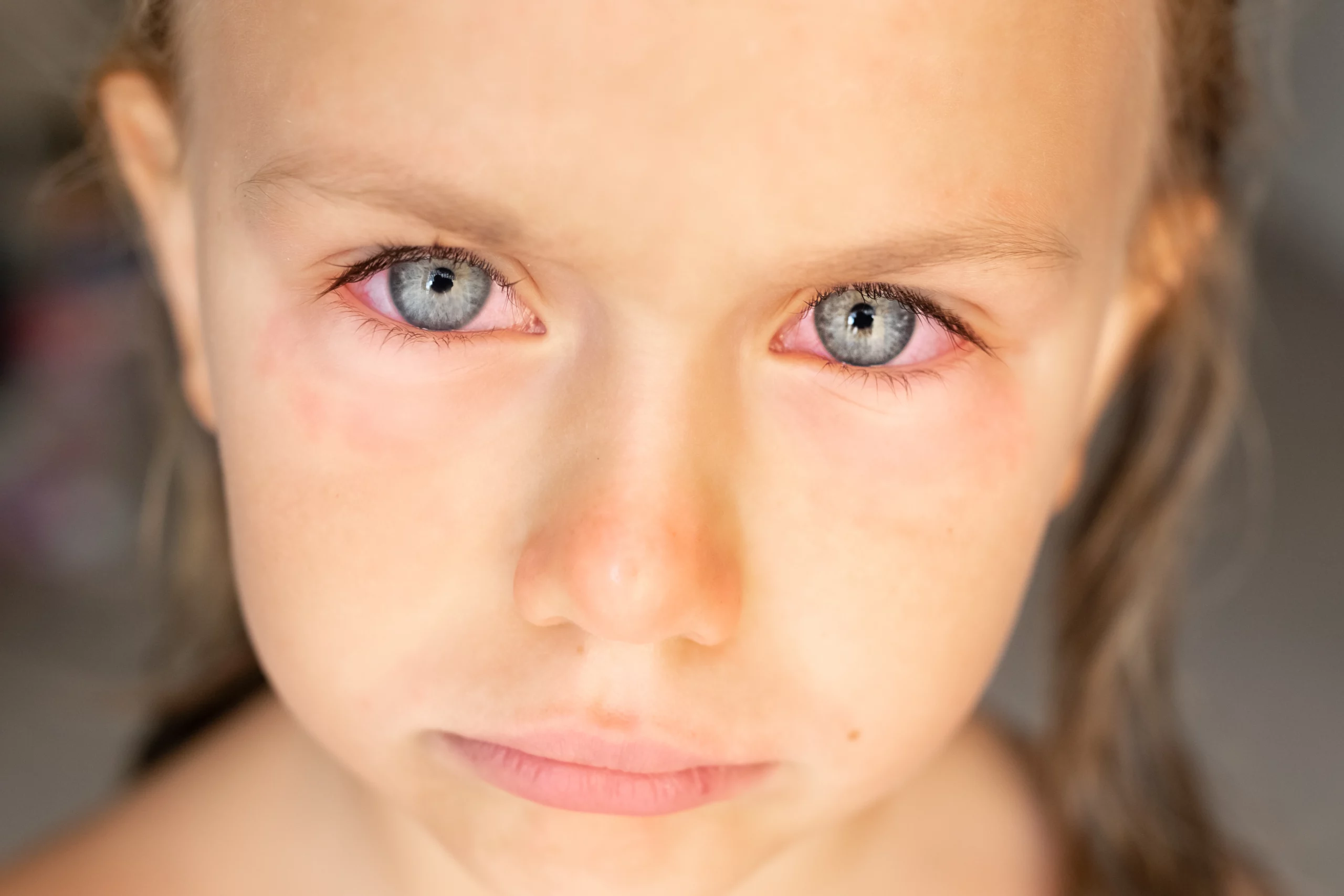The eyes are sensitive parts of our body, and any health issues in the eyes can be bothersome, especially in children. Conjunctivitis is a condition of the eye that affects children, very commonly. This monsoon has led to the rapid spread of conjunctivitis amongst children, read ahead to know how you can prevent it, and care for children affected by it.
What is Conjunctivitis?
The membrane that lines the inside of the eye and covers the eyelids is called the conjunctiva. Inflammation or swelling of this membrane, the conjunctiva is conjunctivitis. The eye turns red or pink in this condition, and thus it’s also called pink eye commonly. It is contagious in most cases and can spread rapidly as an outbreak from one child to the other.
The symptoms of conjunctivitis can last from two days to three weeks, in case of severe or prolonged symptoms consultation with a pediatrician is recommended.
What causes conjunctivitis?
Infection- In children conjunctivitis is more commonly infectious and is caused by the same bacteria and viruses, that are also responsible for causing colds or other infections such as sinus, or ear infections. The monsoon season has led to the rapid spread of this type of conjunctivitis. Some common microbes responsible for the disease include:
Bacteria- Staphylococcus aureus, Haemophilus influenza, Neisseria gonorrhea, Chlamydia trachomatis, etc.
Viruses- Herpes, and adenovirus are commonly associated with conjunctivitis.
Infectious conjunctivitis spreads rapidly from one child to the other especially in a daycare setting or through group plays and activities.
How does the infection spread?
Children can develop infectious conjunctivitis if they come in contact with:
- Discharge from the eyes, nose, or throat of an infected adult/child by touching surfaces that may be contaminated
- Contaminated water, as while swimming
- Using common towels
- Caregivers who handle infected and non-infected children, without taking adequate precautions
Since children are more likely to touch objects, rub and touch their eyes and stay in groups the spread of infection in children is more common and rapid.
Allergies and irritants- Allergens such as dust mites, and irritants such as chlorine water or air pollution can also result in conjunctivitis in children. However, such conjunctivitis may not spread as rapidly and would be seen in individual children who are exposed to allergens or irritants. This is also unrelated to any particular season.
Conjunctivitis of the newborn- This is unrelated to the conjunctivitis of older children and always requires a doctor’s consultation. Pregnant mothers who are affected with Sexually transmitted diseases can pass on the infection to the baby during delivery. Apart from these some other bacteria can also infect the newborn’s eye within the first few days of life. This can develop into a serious condition, but treatment at the right time with antibiotic drops helps in controlling and treating it.
Symptoms of conjunctivitis in children
The pink eye as the name indicates turns the eye, pink or red, which is the biggest telltale sign of conjunctivitis.
Apart from this evident sign, other symptoms of the disease include:
- Irritation in eye
- The feeling of sand in eyes/ rough sensation
- Excessive watering of the eye
- Pain and burning sensation in the eye
- Eyelids sticking together, especially in the morning as soon as the child gets up
- Sensitivity to bright light
- Discharge from eyes- the type of discharge can be thick, stringy, or watery and depends on the type of infection or allergy.
If conjunctivitis develops as a part of any other infection as a cold, or sinus then additional symptoms such as runny nose or fever may also accompany conjunctivitis.
Though older children can express themselves better, younger children may not be able to articulate what they are feeling. Thus, parents need to watch out for signs, like redness, watering, and discharge in them.
When should I take my child to the doctor?
The biggest worry for any parents is knowing when to consult the doctor. Though conjunctivitis of childhood doesn’t lead to complications frequently its recommended to consult a pediatrician if conjunctivitis in your child doesn’t get better after two days, or the child shows the symptoms as mentioned below:
- Severe pain
- Problem in vision
- Excessive swelling or redness around the eyes
- If the child is unwell overall, with fever, malaise, or other symptoms
After examination, your doctor will prescribe medicated eyedrops for pain and infection as required, depending on the type of conjunctivitis.
Any redness of eye in a child of less than 1 month needs to see a doctor.
How can I care for my child at home?
- Clean your child’s eye: Cleaning the eye with warm water can help in making the child feel better. Use soft cotton balls and gently clean your child’s eye from inside (towards the nose) to outwards. Clean in one direction only, and discard the cotton ball after each time after use to prevent cross-contamination. This can also help in removing the crust deposited on the eyes, and help in making the sticking eyelids better. However, do not try to clean the inside of the eye. In case only one eye is affected clean such that the other eye stays untouched.
- Contact lens and eyewear: In case your child uses contact lenses then do not use them till the infection subsides. In the case of spectacles, clean them before use.
- Eyedrops: Artificial tears can help in lubricating the eyes and making children feel better. Eye drops with antibiotics or other medications should only be given in consultation with a pediatrician or ophthalmologist.
- Avoid rubbing and touching eyes: Instruct children to avoid touching eyes or rubbing them.
- Use clean towels: Use a clean separate towel for wiping the face of the child and change it frequently.
- Do not send your child to school or group plays: This may not only infect other children but also be uncomfortable for the child and delay healing.
- Avoid bright light: as the child’s eyes are sensitive at this point. Parents can also use sunglasses for children if they are comfortable wearing them.
Precautions to prevent infectious conjunctivitis
Prevention is always better than cure. Below are some ways in which you can prevent the spread of conjunctivitis in your child:
Practice hand hygiene: Covid has taught us the practice of hand hygiene and it is recommended we stick to it to prevent most infectious diseases. Touching a contaminated object and then touching the eye can spread infectious conjunctivitis. Frequent washing of hands with soap and water especially after outdoor play can prevent this.
Avoid touching eyes: Children should be discouraged from touching and rubbing their eyes to minimize the chances of infection.
Avoid close contact with infected individuals: Close contact and play with infected children can spread the disease rapidly.
Parents and caregivers should practice good hygiene: Keep the door knobs and other commonly touched objects at home clean. Caregivers should clean their hands before handling different children.
Discourage sharing towels and handkerchiefs: to prevent the spread of infection.
While it may be very tempting to enjoy the rains and set oneself free in the monsoon season, some basic precautions if kept in mind can help you and your child stay healthier and happier!

